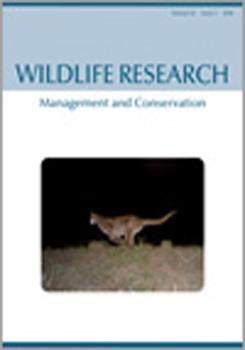Context. Camera trapping is commonly employed for studying carnivores because it provides better data than do other methods, and with lower costs. Increasing the probability of detecting the target species can reduce parameter uncertainty and survey effort required to estimate density and occurrence. Different methods, including attractants and baits, can be used to increase detectability. However, their efficacy has rarely been quantitatively assessed.
Aims. To quantify the efficacy of scent and bait attractants to increase the detection probability of mesocarnivores by camera trapping.
Methods. We tested two scent lures, valerian extract (Val) and lynx urine (LU), their combination (Val–LU), and a non-reward bait (i.e. not accessible to the animal), raw chicken, as carnivore attractants in two protected areas of central Spain. We used camera-trapping records under an occupancy-modelling framework to estimate attractant-specific detection probabilities for six mesocarnivore species, and quantified their effects by comparing these estimates with the baseline (i.e. no attractant) detectability.
Key results. The weekly detection probability of four mesocarnivore species (red fox, Vulpes vulpes, stone marten, Martes foina, common genet, Genetta genetta, and Eurasian badger, Meles meles) significantly increased when Val–LU (between 0.11 ± 0.07 and 0.67 ± 0.05) or chicken (between 0.31 ± 0.02 and 0.77 ± 0.22) were used as attractant, when compared with baseline detectability (between 0.01 ± 0.02 and 0.29 ± 0.05). Although rarely, wildcats (Felis silvestris) were mostly detected with Val–LU. The probability of detecting a species after k sampling occasions (7 days each) where it was present was highly improved with both Val–LU and chicken for all species (e.g. from 0.20 to 0.98 after four sampling occasions with chicken for the stone marten). Both attractants reduced the sampling time required to ascertain that a species was absent to between 42% and 15% of baseline values.
Conclusions. The tested attractants greatly improved the detectability of most Iberian mesocarnivores. Although chicken was preferable for some species such as stone marten, Val–LU is most efficient for detecting the whole mesocarnivore community, including rare species such as wildcats.
Implications. Attractant selection in studies using non-invasive detection methods must be supported by quantitative assessment of the detection probability associated to each attractant. Researchers must choose those attractants best fitting target species and study aims.





